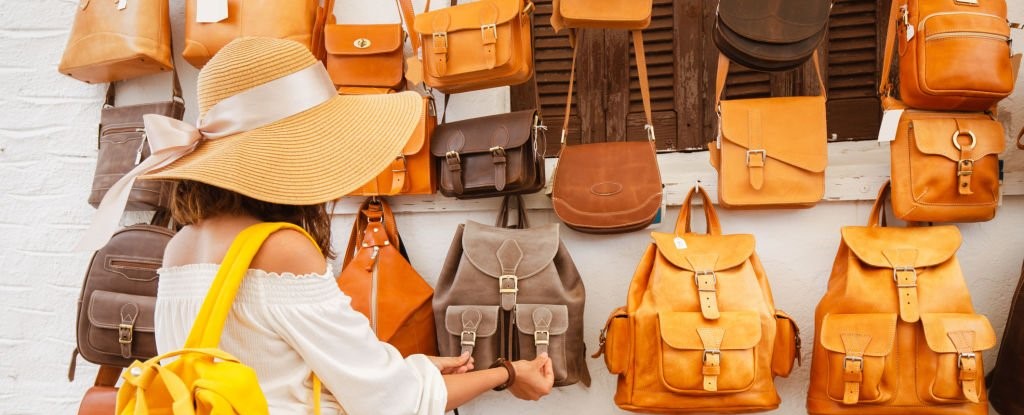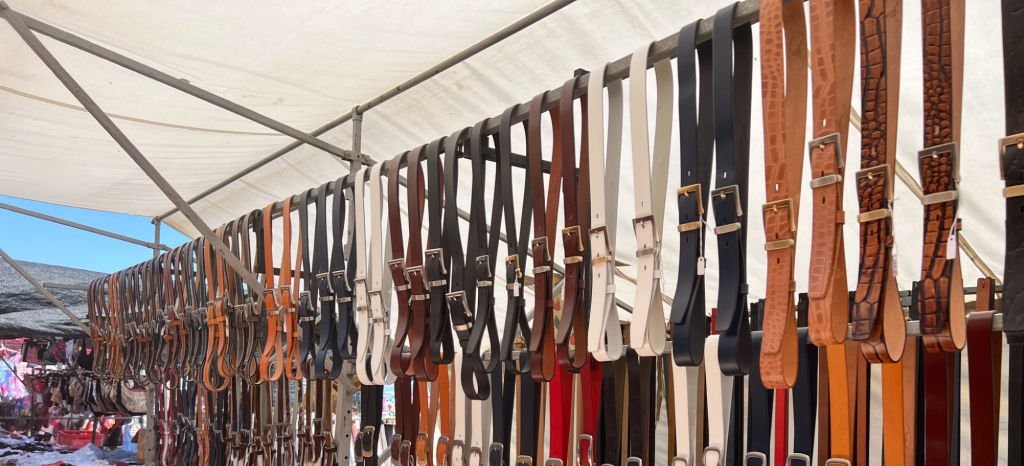Leather Markets

The leather market is a key segment of the fashion and consumer industry, constantly influenced by economic, social, and environmental changes. This industry encompasses not only the production and distribution of leather products but also tanning processes and technological innovations. With rising awareness of environmental issues and demand for sustainable products, manufacturers are shifting towards more effective and less harmful methods. Understanding the market structure, influencing factors, and key trends is essential for success in this industry.
1. Structure of Leather Markets :
The structure of leather markets is complex and multifaceted, encompassing various segments that cater to diverse consumer needs and preferences. A comprehensive understanding of this structure is essential for stakeholders in the industry, including manufacturers, retailers, and policymakers. Below, we examine the market structure of leather in detail, focusing on product categories, tanning processes, distribution channels, and key players in the industry.
A. Product Categories :
The leather market is divided into several main categories:
– Apparel: This includes various leather garments, such as jackets, pants, and skirts. This segment has high demand due to the aesthetic appeal and durability of leather.
– Footwear: Leather shoes represent one of the largest and most sought-after segments in the leather market. The quality and comfort of natural leather contribute to the popularity of these products.
– Bags and Accessories: This category includes handbags, travel bags, and leather accessories like belts and wallets. The design and quality of these products can significantly influence consumer choices.
– Furniture: Leather is used as a luxurious material in furniture, including chairs, sofas, and other decorative pieces.
– Corrected Grain and Synthetic Leather: These products are often used as cost-effective alternatives to natural leather and are popular in specific markets.
B. Tanning Processes :
Tanning is a key step in leather production and is divided into two main categories:
– Vegetable Tanning: This method uses natural tannins extracted from plants. It is gaining attention due to its eco-friendliness and lower environmental impact.
– Chemical Tanning (Chrome): This method involves the use of chemicals to tan leather quickly and at a lower cost. However, there are environmental concerns related to the use of chrome and other chemicals.
C. Distribution Channels :
The distribution of leather products occurs through various channels:
– Retail Stores: This includes specialized leather shops and fashion retailers that offer leather products directly to consumers.
– Online Sales: With the rise of online shopping, many leather brands have turned to digital platforms. This shift has enhanced access to new markets.
– Distributors and Wholesalers: These channels typically purchase leather products from manufacturers and supply them to retailers.
D. Key Players :
Several major brands and manufacturers are recognized as key players in the leather market. These brands dominate the market with innovation, high quality, and unique designs. Some key players include:
– Luxury Brands: Well-known brands that produce high-quality, luxurious leather products.
– Local Producers: These manufacturers typically focus on local markets and produce quality, affordable products.

2. Factors Influencing Leather Markets :
Multiple factors impact leather markets, and understanding them is crucial for success in this industry. These factors include consumer demand, technological advancements, economic developments, and environmental issues. Below, we explore these factors in detail.
A. Consumer Demand :
– Changes in Preferences and Tastes:
Consumers are increasingly seeking high-quality and sustainable products. This shift in preferences has led to a rising demand for vegetable-tanned leathers and environmentally friendly production processes.
– Environmental Awareness:
As environmental awareness grows, consumers are more inclined to choose products that have a lower impact on the environment. This trend has contributed to the growth of sustainable and eco-friendly leather markets.
– Consumer Experience:
The quality and design of leather products significantly influence consumer experience. Brands that focus on unique designs and high quality tend to be more successful in the market.
B. Technological Development :
– Innovation in Production Processes:
Technological advancements in tanning and leather production have improved quality and reduced costs. For instance, new technologies like 3D printing can facilitate the creation of leather products with complex designs.
– Use of Alternative Materials
With the development of new and alternative materials, manufacturers can move towards producing more sustainable leather products. These materials can be designed to mimic natural leather while having a lesser negative impact on the environment.
C. Economic Developments :
– Economic Fluctuations
The economic conditions of countries greatly affect consumers’ purchasing power. In times of economic growth, the inclination to purchase leather products increases, while during recessions, demand tends to decline.
– Growth of Emerging Markets:
As incomes rise in emerging markets like India and China, the demand for leather products in these regions is also increasing. This growth allows manufacturers to access new markets.
D. Environmental Issues :
– Environmental Challenges
Tanning and leather production processes, especially traditional methods, can lead to air and water pollution. These concerns put pressure on manufacturers to adopt more sustainable and less harmful methods.
– Compliance with Environmental Standards
With the rise of global environmental regulations, manufacturers are required to adhere to these standards. Non-compliance can result in penalties and damage to brand reputation.

3. Key Trends in Leather Markets :
Key trends in leather markets significantly impact how leather products are produced, distributed, and consumed. These trends not only influence demand and supply dynamics but also affect how brands interact with consumers and shape the market. Below, we explore the key trends in the leather industry.
A. Sustainability and Environmental Trends :
– Increasing Demand for Sustainable Leather
With rising environmental awareness, consumers are increasingly inclined to purchase leather products produced through sustainable processes. This trend has led to greater production of vegetable-tanned leathers and the use of recycled materials in leather goods.
-Green Innovations
Manufacturers are developing new methods to reduce the environmental impacts of leather production. For instance, advanced technologies are being employed to decrease water consumption and the use of chemicals in tanning processes.
B. Changes in Design and Fashion:
– Modern and Versatile Designs
Consumers are looking for leather products with modern and multifunctional designs that can be used in various settings. This shift enables manufacturers to create products that offer both utility and aesthetic appeal.
-Use of Advanced Technologies in Design
New technologies, such as sophisticated design software and 3D printing, allow designers to create leather products with intricate and unique designs.
C. Growth of Online Markets :
-Increase in Online Shopping
With the expansion of the internet and the increasing use of smartphones, online sales of leather products are on the rise. Brands are increasingly turning to digital platforms to facilitate access to new markets.
-Enhanced User Experience:
Brands are investing in improving the online user experience to make shopping easier and more engaging for consumers. This includes using augmented reality to showcase products and enhance customer service.
D. Focus on Social Responsibility :
-Social Sustainability
Brands are increasingly focusing on the social aspects of their production. This includes ensuring workers’ rights within the supply chain and maintaining appropriate working conditions.
-Transparency in the Supply Chain
Consumers now demand greater transparency regarding the supply chain. Brands are required to provide information about the sourcing of raw materials and the conditions under which their products are made.
E. Changes in Consumption Patterns :
– Conscious Purchasing
Consumers are increasingly inclined towards conscious purchasing, favoring high-quality and sustainable products. This shift in consumer behavior pressures manufacturers to pay more attention to the quality and sustainability of their offerings.
-Growth of Second-Hand Markets:
The market for second-hand and vintage leather products is growing, especially among younger consumers. This trend reflects a desire for more sustainable purchasing options and a reduction in waste.
4. Challenges and Opportunities in Leather Markets :
Leather markets face various challenges and opportunities that can significantly impact the performance and growth of this industry. Understanding these challenges and opportunities is crucial for manufacturers and other market stakeholders. Below, we examine the challenges and opportunities in the leather market.
A. Challenges:
– Environmental Issues
Tanning and leather production processes, especially traditional methods, can lead to water and air pollution. This not only harms the environment but can also damage brand reputation as public awareness increases.
– Changes in Consumer Demand
With growing environmental awareness, there is increasing demand for sustainable leather and environmentally friendly production processes. Brands that cannot adapt to these changes may lose market share.
– Intense Competition
The leather market faces fierce competition from both local and international manufacturers. This competition can lead to price reductions and lower profitability.
– Economic Fluctuations
Variable economic conditions can significantly affect consumers’ purchasing power. During economic downturns, demand for leather products typically declines.
– Challenges in Raw Material Supply
Securing high-quality raw materials for leather production can be challenging, especially in unstable economic and environmental conditions.
B. Opportunities :
– Growth in Emerging Markets
As incomes rise in emerging markets like India and China, the demand for leather products in these regions is increasing. This growth allows manufacturers to access new markets.
– Increasing Demand for Sustainable Products
Consumers are increasingly seeking sustainable and eco-friendly products. Producers who can offer these features may increase their market share.
– Technological Innovations
Advances in technology in production and tanning processes can lead to improved quality and reduced costs. The use of new technologies such as 3D printing and artificial intelligence can facilitate the creation of products with complex designs.
– Expansion of Online Sales With the rise of online shopping, brands can enter new markets and enhance consumer access. This trend allows manufacturers to sell their products at lower costs.
– Focus on Social Responsibility
Brands that prioritize social responsibility and sustainability can attract loyal customers and improve their reputation. This approach can lead to increased sales and brand growth.

Conclusion
The leather market faces various challenges and opportunities that are crucial for success in the industry.
1. Consumer Demand: Shifts in consumer preferences towards sustainable and high-quality products require manufacturers to adapt accordingly.
2. Technological Innovations: Technological advancements can enhance quality and reduce costs, empowering brands to compete more effectively.
3. Social and Environmental Responsibility: Attention to environmental issues and transparency in the supply chain can improve brand reputation and attract loyal customers.
4. Opportunities in Emerging Markets: Growth in emerging markets presents opportunities for increased demand and access to new markets.
Ultimately, manufacturers must pay simultaneous attention to both challenges and opportunities to thrive in the competitive and evolving leather market.

